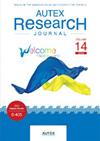Technology integration to promote circular economy transformation of the garment industry: a systematic literature review
IF 1.1
4区 工程技术
Q3 MATERIALS SCIENCE, TEXTILES
引用次数: 0
Abstract
Abstract This study was prompted by the unsustainable issues facing the garment industry and the trend toward digitalisation in the post-coronavirus disease 2019 (COVID-19) pandemic era. COVID-19 substantially affected global trade, which caused significant garment industry stagnation due to embargoes and international restrictions. Consequently, the stagnation led to a significant inventory backlog and hindered product distribution, which compelled garment companies to turn to online commerce. A circular economy (CE) attempts to halt commodity flow and convert waste into resources; therefore, it can alleviate the substantial garment industry pollution and waste produced under a linear economy and maximise product life cycles. Industrial Revolution 4.0 incorporates technological innovation and information technology to transform the garment industry, which technologically enhances manufacturing intelligence and inspires garment industry transformation into a CE. This systematic literature review discusses the necessity of transforming the garment industry into a CE and the technological advantages and challenges to promoting sustainable garment industry development. The findings demonstrated that transforming the garment industry into a CE can not only resolve its environmental pollution and excess supply issues but can also accommodate new supply and demand requirements, such as market digitisation, consumer personalisation, and industry chain transparency. Finally, a technology integration initiative was proposed to promote garment industry transformation into a CE by digitising product development to achieve sustainable development.促进服装业循环经济转型的技术整合:系统文献综述
在2019冠状病毒病(COVID-19)大流行时代,服装行业面临的不可持续问题和数字化趋势促使了这项研究。新冠肺炎疫情严重影响了全球贸易,由于禁运和国际限制,导致服装行业严重停滞。因此,停滞导致大量库存积压,阻碍了产品分销,这迫使服装公司转向网上商务。循环经济(CE)试图停止商品流动并将废物转化为资源;因此,它可以缓解在线性经济下产生的大量服装工业污染和浪费,最大限度地提高产品的生命周期。工业革命4.0融合了技术创新和信息技术对服装产业的改造,从技术上提升了制造智能化,激发了服装产业向CE的转型。本文通过系统的文献综述,探讨了我国服装产业转型的必要性,以及促进服装产业可持续发展的技术优势和挑战。研究结果表明,将服装产业转型为环保产业不仅可以解决其环境污染和供应过剩问题,还可以适应新的供需要求,如市场数字化、消费者个性化和产业链透明度。最后,提出了技术整合倡议,通过产品开发的数字化,推动服装产业向CE转型,实现可持续发展。
本文章由计算机程序翻译,如有差异,请以英文原文为准。
求助全文
约1分钟内获得全文
求助全文
来源期刊

Autex Research Journal
MATERIALS SCIENCE, TEXTILES-
CiteScore
2.80
自引率
9.10%
发文量
40
审稿时长
>12 weeks
期刊介绍:
Only few journals deal with textile research at an international and global level complying with the highest standards.
Autex Research Journal has the aim to play a leading role in distributing scientific and technological research results on textiles publishing original and innovative papers after peer reviewing, guaranteeing quality and excellence.
Everybody dedicated to textiles and textile related materials is invited to submit papers and to contribute to a positive and appealing image of this Journal.
 求助内容:
求助内容: 应助结果提醒方式:
应助结果提醒方式:


